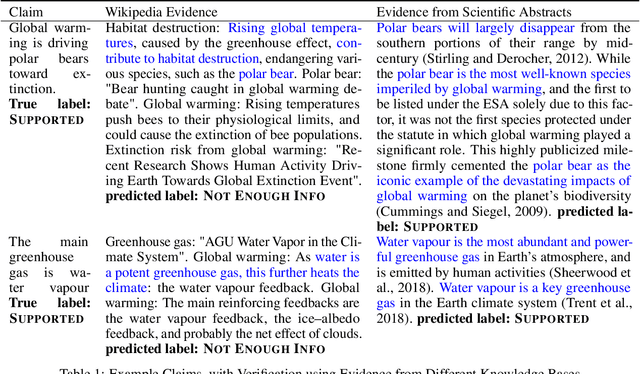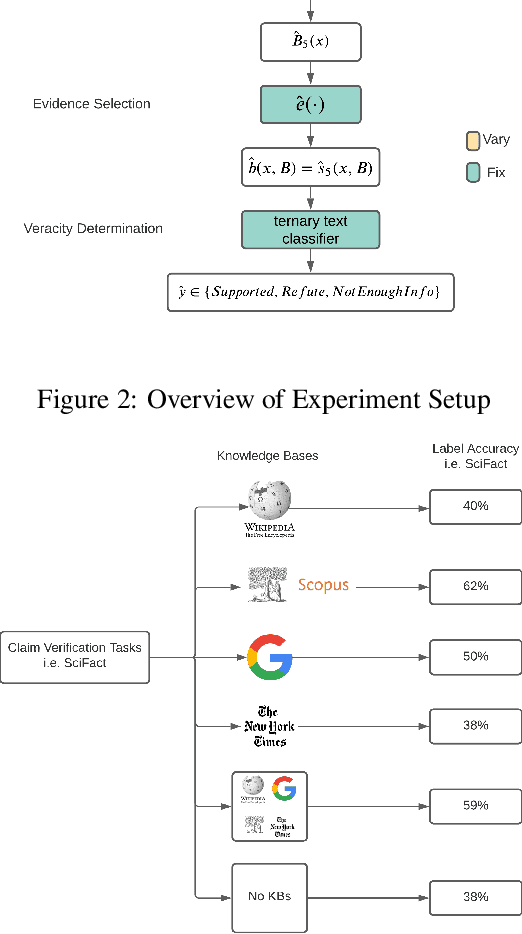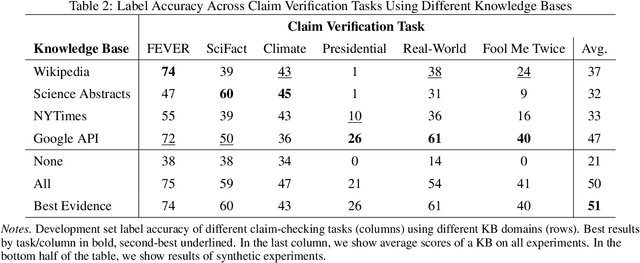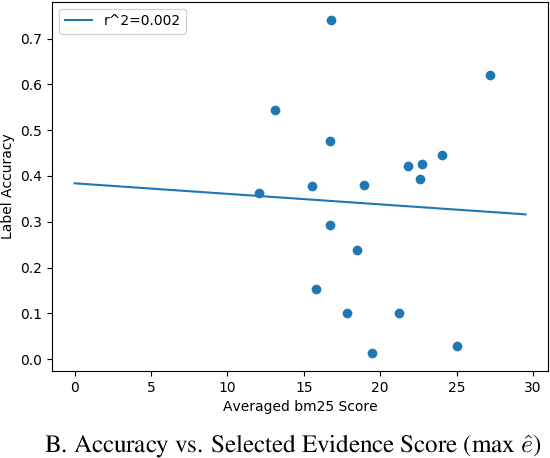The Choice of Knowledge Base in Automated Claim Checking
Paper and Code
Nov 15, 2021



Automated claim checking is the task of determining the veracity of a claim given evidence found in a knowledge base of trustworthy facts. While previous work has taken the knowledge base as given and optimized the claim-checking pipeline, we take the opposite approach - taking the pipeline as given, we explore the choice of knowledge base. Our first insight is that a claim-checking pipeline can be transferred to a new domain of claims with access to a knowledge base from the new domain. Second, we do not find a "universally best" knowledge base - higher domain overlap of a task dataset and a knowledge base tends to produce better label accuracy. Third, combining multiple knowledge bases does not tend to improve performance beyond using the closest-domain knowledge base. Finally, we show that the claim-checking pipeline's confidence score for selecting evidence can be used to assess whether a knowledge base will perform well for a new set of claims, even in the absence of ground-truth labels.
 Add to Chrome
Add to Chrome Add to Firefox
Add to Firefox Add to Edge
Add to Edge